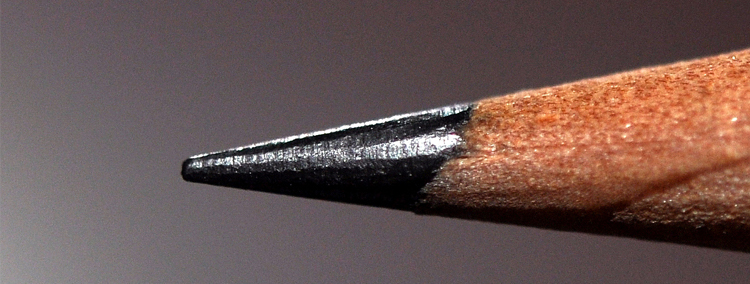During these recent years, graphite has become a more appreciated material on the market. Thanks to some of its features, it is now considered as one of the leading candidates to become the conductor of the future.

We are talking about a material able to conduct electricity even better than copper.
Its transparency is comparable to glass and has a higher resistance than steel.
Not to be underestimated the fact that, it can almost be bent as if it were simple plastic; this characteristic would make possible to use it to create collapsible touchscreens.
What’s surprising of this material, is the graphene, a material obtained by treating graphite with a sulfuric and nitric acid solution.
This layer of carbon atoms, linked together by a hexagonal lattice, show amazing properties, such as the stretchability (it reaches 120% of its length) and the ability to conduct electricity in a much more effective way then silicon (approximately 250 times better).
Graphite seems to have the potential to revolutionize the electronics world especially, thanks to its ability to conduct electrical current.
For the computers of the future, graphite could be used as an alternative to the current silicon. Two other characteristics need to be mentioned. Graphite doesn’t only conduct electricity, but is also able to conduct heat and thanks to its high density, cannot even be crossed by helium.
If once upon a time, the term graphene only recalled the graphite used in the manufacture of pencils, from 2004 everything has changed.
That year, two researchers of the University of Manchester (Konstantin Novoselov and Andre Geim) managed to extract from graphite, graphene, a two-dimensional molecule that has begun to be used in semiconductors.
The next step was (and still is), to use it for the processors, with advantages both on a dimensional level (and, consequently, in terms of weight) and on the speed of execution.
The discovery was considered so important that the two researchers won the Nobel Prize. Since 2005, the world’s biggest universities have already started new studies, aiming at developing several innovative equipment.
As it happened for many other discoveries made in the course of history, even the discovery of graphene was made by chance, or we may say, made by the right event at the right time.
The two researchers were used to consecrate their Friday nights to make out of the box experiments.
During one of those evenings, using the common adhesive tape to remove the layers of carbon present on a thin piece of graphite, they obtained as a result one monoatomic layer of carbon atoms.
Among the possible future applications of this material, although the main is the electronic industry, others, belonging to the most diverse industries, can be remembered.
For example, it will be possible to use graphite to produce lithium ion batteries (more specifically for the automotive sector), or to obtain tires.
Even within the same electronic industry, many different segments can benefit from this material.
For instance, in the field of microelectronics, graphite improves the efficiency of LED lighting, as well as giving the opportunity to realize chips or ultrafast transistors, through which terahertz can be reached. Finally, computers may also be faster and consume less electricity.
Graphite can also be used for solar panels and touch screens. In this case, the transparency and the quality of the electrical conductor stand out.
Even the transport industry could benefit from the use of graphite. In fact, it would be used in the production of components for both cars and other means of transport, such as trains and airplanes, thanks to the resistance to high temperatures and possible impacts.
The first partnerships are already underway; in the tire industry, for example, some leading companies decided to replace the “carbon black” with graphene inside the blends, obtaining greater and optimal rolling resistance.
Thanks to its great electrical conductivity, graphite has been successfully used in the production of rubber (both natural and synthetic) by leading companies of the rubber industry.
